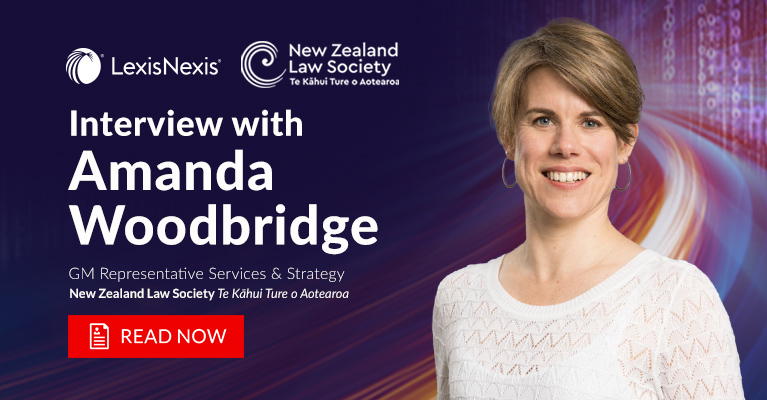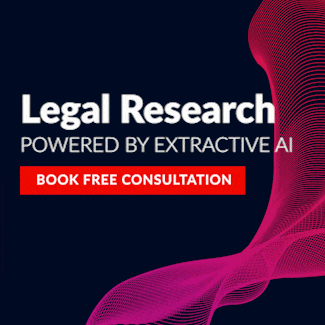Latest Articles
From small town beginnings to national impact: Employment law firm championing...
Caroline Rieger believes employment law has the power to transform. "Employment law has the ability to really change communities, both in positive and negative ways," the founder and managing director...
New Zealand Law Society launches major AI research project
When a lawyer asked a New Zealand Law Society Te Kāhui Ture o Aotearoa librarian to track down a case cited by an AI tool - and it didn’t exist - it became clear just how urgently the profession needs...
How to Select a Responsible AI Business Partner
This article was written by Geoffrey D. Ivnik, Esq. | Director of Large Markets, LexisNexis ® in our US office. Lexis+ AI ® was launched in the US in October 2023, and Geoffrey has written this article...
Meet the incoming Managing Director for LexisNexis Asia & Pacific
After more than a decade with LexisNexis, Katy Fixter is stepping into one of the most promising growth markets in LexisNexis – leading the company’s Asia Pacific operations as managing director. The move...
The future of probate law by authors of bestseller
For legal professionals dealing with wills, estates, and probate, Dobbie’s Probate and Administration Practice has long been a go-to resource. Now in its seventh edition, the LexisNexis NZ publication...

When a lawyer asked a New Zealand Law Society Te Kāhui Ture o Aotearoa librarian to track down a case cited by an AI tool - and it didn’t exist - it became clear just how urgently the profession needs guidance. Artificial intelligence is already in many of New Zealand’s legal offices, but many practitioners are still figuring out how to use it safely, ethically, and effectively.
That’s why the Law Society has launched the AI Research Project 2025 in partnership with LexisNexis: to get a clear picture of how lawyers are using AI, what risks they’re facing, and what support they need next. Central to this work is its collaboration with LexisNexis, an experienced legal technology partner that’s bringing international insights and data analysis support to the project.
Amanda Woodbridge, General Manager Representative Services and Strategy, says the challenges of AI are growing more complex with every day, which means this research project is being implemented at a crucial time.
“We know the profession is grappling with how to adopt AI, and how to manage some of the risks around it,” Woodbridge tells NZ Lawyer.
“We’ve seen a lot of demand for education and tools in this area, particularly on managing risks including confidentiality, privacy, ethics and hallucinations. It’s exciting to be kicking off an important piece of work that will inform the education and support we offer the profession in the next few years.”
Getting ahead of the curve
The Law Society AI Research Project 2025 is built on a simple premise: understand what’s happening on the ground and use that insight to plan meaningful support for the profession.
Woodbridge notes that the Law Society has already seen significant demand for resources and education from lawyers unsure about how to manage AI-related risks.
“We’ve had feedback from the profession stating how important issues like privacy, data security, hallucinations (when the AI tool generates content that is incorrect, nonsensical, or entirely fabricated, even though it may appear plausible) are, and we can see that it’s moving very fast internationally,” Woodbridge explains.
“It’s now at a stage where we need to be more planned and deliberate about what our education and support looks like, and the best starting point is getting a snapshot of what’s happening in New Zealand.”
While lawyers are ultimately responsible for the quality of the legal services that they provide and have professional obligations under the Conduct and Client Care rules, there is no overarching regulation for the use of AI in New Zealand. Potential uses for AI in legal services have thrown up some complex questions on how lawyers can protect client information and ensure that any AI-generated content is accurate, factual and valid.
Woodbridge notes that the Law Society is closely connected to its counterparts in jurisdictions like Australia, Canada, and the UK, and will be watching closely to see how the international community responds to these questions. The Law Society already released some guidance and practical checklists on AI fifteen months ago, which discussed issues like privacy, confidentiality and risk management. The survey is the next stage of this initiative and will give insights on the kind of support that lawyers need.
“We’re also running some research and focus groups with our libraries team to see how we can better support the profession,” Woodbridge adds.
“One of the themes coming through is incorporating AI into our research services. In that sense, AI is really a very consistent trend in every area of the profession.”
Shifting to a proactive strategy
The need for this initiative stems from a growing awareness that AI is not just a passing trend. It’s already been described by some commentators as a shift as significant as the dawn of the internet. For lawyers, this means a long-term shift in how legal work is approached and delivered.
While some lawyers are proactively leading the charge on AI, a number are adopting a ‘wait and see’ approach. Woodbridge notes that this is typical for the innovation-adoption curve that occurs with all new technology - but for the Law Society, the vision is to be very deliberate about the education and tools provided over the next few years.
“The survey will help us shift away from a relatively reactive approach to planning ahead, because that’s where the profession is going,” she says.
“We are delighted by the response rate so far. It’s very representative of lawyers across the country in different practice areas, which is important to us.”
The survey asks about the extent to which lawyers currently use AI, how they’re implementing it and what they consider to be the pros and cons, among other questions. The results are due to be published mid this year, and the Law Society will be embarking on a webinar and a nationwide roadshow with LexisNexis to discuss the results and help lawyers to leverage AI safely and effectively.
Woodbridge highlights that the international research insights provided by LexisNexis were particularly valuable to the development of the survey, and international benchmarking will be one of the key outcomes.
“The LexisNexis team has provided us with the research questions they’ve used internationally, and having that benchmark has been really helpful,” she explains.
“It gives us confidence that we’re asking the right questions, and we’ll be able to make comparisons to how New Zealand stacks up compared to other jurisdictions on key issues.
“The LexisNexis team has been generous in sharing their international research on this topic. It’s exciting to be able to leverage that information and skills to bring something fantastic and specific to the New Zealand legal profession.”
The Law Society encourages all practitioners to share their insights in the Law Society AI Research Project 2025 by 18th April.
